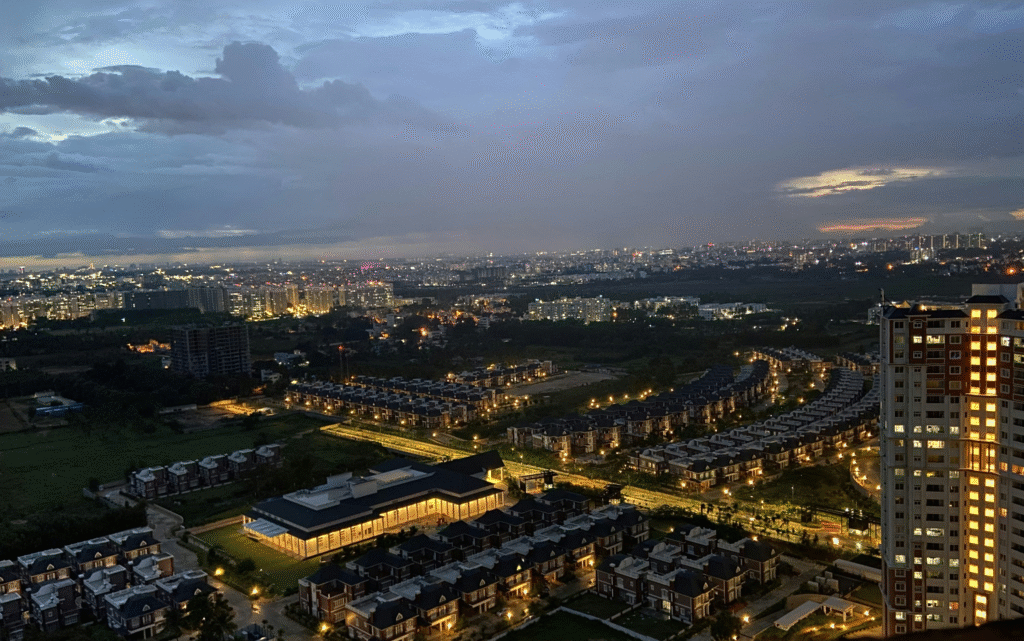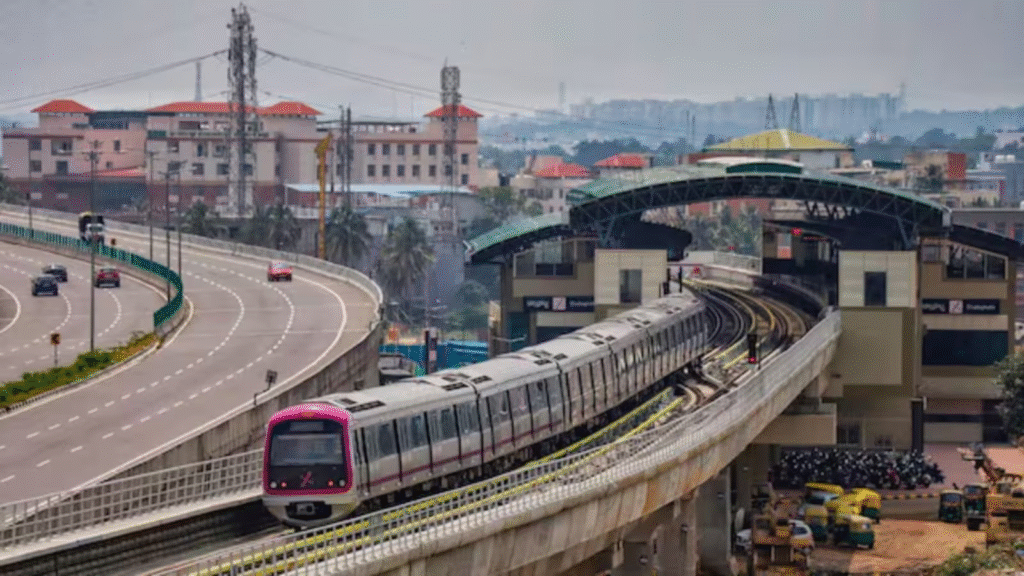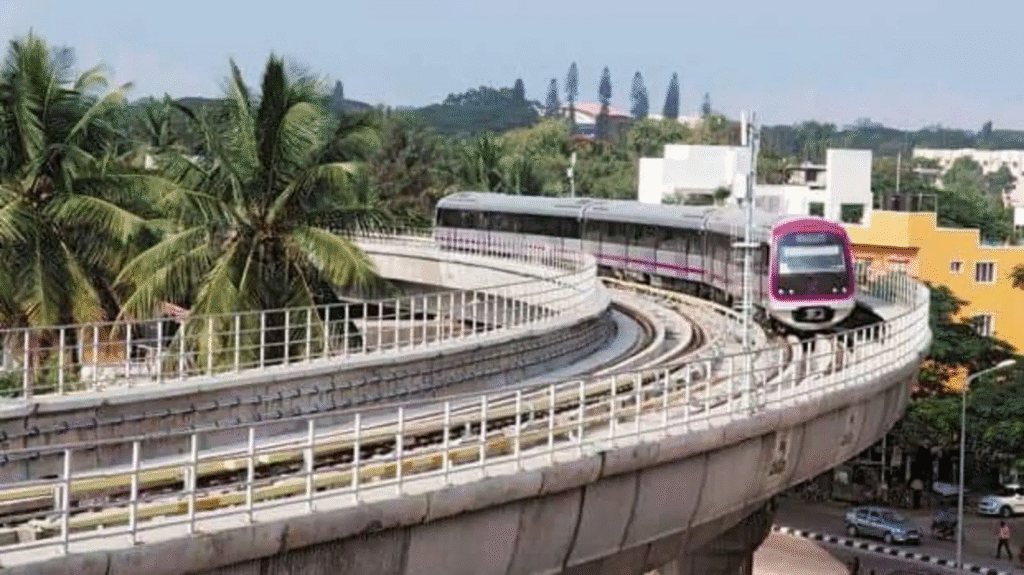Bengaluru, often known as the Silicon Valley of India, is finally taking a giant leap toward solving its biggest headache — traffic congestion. With the city growing rapidly in terms of population and development, the government has launched a massive infrastructure expansion project. This includes double-decker flyovers and Metro network extensions aimed at making commuting easier, faster, and smoother.
Let’s explore what’s happening, why it matters, and how it will transform everyday life for Bengalureans.
Table of Contents
🏗️ Why Bengaluru Needs Better Infrastructure
Bengaluru is home to over 1.5 crore residents and sees thousands of new migrants every year. The city has become a hub for IT, startups, education, and real estate, but this rapid growth has overwhelmed its roads and public transportation systems.
Currently:
- Average peak-hour travel speed is just 10–15 km/h.
- Most key roads see daily traffic jams lasting over 1 hour.
- Bus and metro coverage, while improving, are still not adequate for every neighborhood.

This infrastructure bottleneck has led to poor air quality, lost productivity, and rising frustration among residents.
🛣️ What’s Being Built: Key Projects Announced
Chief Minister Siddaramaiah recently announced a multi-phase infrastructure plan, including:
1. Double-Decker Flyovers
These flyovers will be built above existing roads, with two levels:
- Lower deck for general traffic
- Upper deck for Metro lines or rapid buses
Key Benefits:
- Saves ground-level space
- Faster commute
- Less land acquisition cost
2. Metro Expansion
- Existing Namma Metro lines will be extended to Whitefield, Electronic City, KR Puram, and Hebbal.
- A new suburban rail project is also in the pipeline to connect outer Bengaluru with the city center.
3. Elevated Corridors & Expressways
- Projects like Peripheral Ring Road (PRR) and Satellite Town Ring Road (STRR) are being pushed to reduce heavy vehicle traffic in the city core.
🚦 Which Areas Will See Change First?
The infrastructure expansion will start with high-density corridors, including:
- Silk Board Junction to Hebbal
- Jayadeva Hospital Junction
- KR Puram to Tin Factory
- Majestic and surrounding Central Business Districts
The government aims to decongest at least 10 traffic hotspots within the next 18–24 months.
💼 How It Affects Working Professionals
If you’re working in Bengaluru’s tech zones like:
- Whitefield
- Electronic City
- Koramangala
- Manyata Tech Park
You’ll likely see significant changes. Longer but smoother flyovers and extended metro lines mean:
- Less stress during commute
- Fewer hours in traffic
- Lower fuel costs
- Improved work-life balance
Employers too will benefit from improved employee productivity and fewer late arrivals.
READ ALSO : Why Heart Attacks Are Rising in Karnataka in 2025 and How to Prevent Them

🌍 Environmental Benefits
This is not just about vehicles — the infrastructure overhaul is eco-conscious too:
- More Metro, less pollution: Metro extensions are expected to reduce private vehicle use by 25–30%.
- Green cover preservation: Flyovers and corridors are being planned to avoid cutting down too many trees.
- Rainwater harvesting and solar lighting on flyovers are under consideration.
🏘️ Impact on Real Estate & Local Economy
Improved roads and Metro connectivity will boost real estate prices in nearby suburbs like:
- HSR Layout
- JP Nagar
- Yelahanka
- Kengeri
It will also improve access to schools, hospitals, and job hubs, leading to better living conditions.
Small businesses like cafes, shops, and co-working spaces will benefit from higher footfall due to better transport access.
⏳ Challenges Ahead
Despite the excitement, some challenges remain:
- Land acquisition delays
- Construction dust and noise
- Traffic rerouting during building phases
- Coordination between multiple government departments
However, the government claims that new technologies and fast-track construction methods will reduce delays and inconvenience.
READ ALSO

🔮 What the Future Holds
If implemented on time and efficiently:
- By 2027, Bengaluru could have the most advanced multi-level transport system in India.
- The city may become a model for smart urban infrastructure.
- More residents might switch to public transport, making roads cleaner and safer.
📝 Conclusion
Bengaluru’s infrastructure boom is more than just cement and steel. It represents hope for millions of residents tired of traffic, pollution, and long commutes. The vision of a smart, sustainable, and efficient city is finally coming to life.
If all goes as planned, this may be the transformation Bengaluru has long needed.










